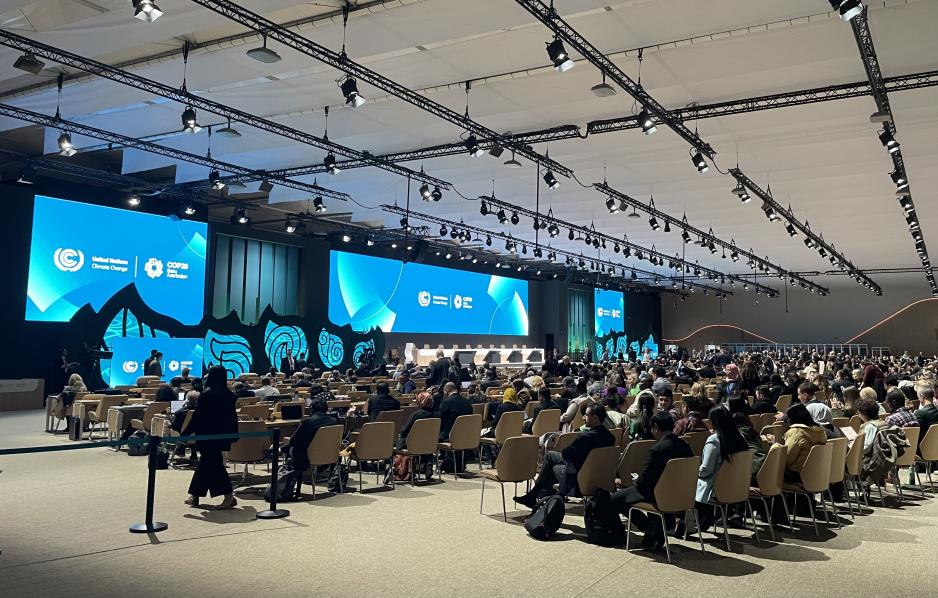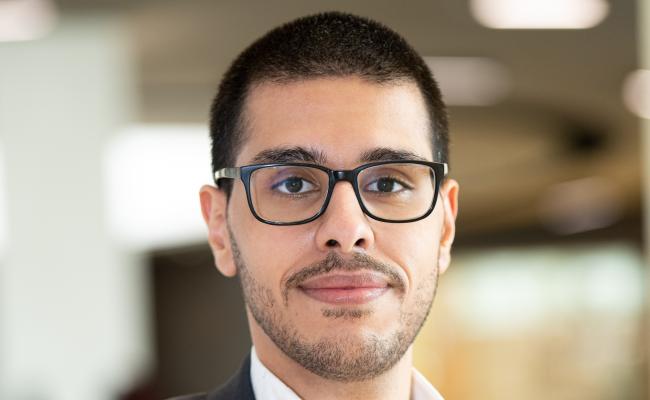Op-ed: From the North to the Tropics: Why Arctic Adaptation Must Be a COP30 Priority

Master candidate at Yale University, Hassan Alzain, says COP30 offers a rare opportunity to reframe adaptation not as a privilege for the poor, but as a universal necessity in a world of unequal climate burdens. (Photo from COP29 in Baku, Azerbaijan in November 2024: ECCOthinktank via Flickr)
Op-ed: The Arctic is warming nearly four times faster than the global average, yet its communities receive virtually no adaptation support. COP30 must start to close that justice gap, writes Hassan Alzain.
This is an opinion piece written by an external contributor. All views expressed are the author's own.
Global Frameworks Must Not Overlook the High North
As the Bonn Climate Change Conference (SB62) concluded in June 2025, discussions intensified around operationalizing the Global Goal on Adaptation and finalizing governance for the Loss and Damage Fund.
COP30 in Belém, Brazil, is poised to become the next major milestone in the climate negotiation cycle. While the focus rightly centers on vulnerable communities in tropical regions, Arctic populations facing immediate and severe consequences continue to be sidelined in adaptation frameworks.
This omission not only weakens the integrity of global climate justice but also risks irreparable harm to some of the planet’s most fragile ecosystems and resilient cultures.
Arctic Infrastructure at Risk
The Arctic is a landscape built on permafrost, but that foundation is rapidly collapsing. Approximately 70 percent of the current infrastructure in permafrost regions, including homes, roads, pipelines, airports, and energy facilities, is projected to be at risk from near-surface thaw by mid-century.
More than 3.6 million people live in these high-risk zones. In Russia, 45 percent of Arctic hydrocarbon extraction fields are located on degrading permafrost, threatening energy security and export revenues. Real-world consequences are already visible: in Tuktoyaktuk, airport runways have warped, and in Yakutsk, essential road networks have suffered repeated damage due to ground instability.
These failures are not localized problems; they represent systemic threats to entire Arctic economies. The financial cost of stabilizing or relocating infrastructure is projected to reach tens of billions of dollars over the next three decades.
Yet, no comprehensive global funding mechanism currently targets Arctic-specific adaptation, leaving national and municipal governments to bear the burden.
Only 63 billion USD was directed toward adaptation projects.
A Permafrost Carbon Time Bomb
Beyond infrastructure, permafrost itself is a ticking carbon bomb. Arctic soils contain approximately 1,500 gigatons of organic carbon, roughly twice the amount currently in the atmosphere. As temperatures rise, microbial activity in thawing soils releases carbon dioxide and methane, greenhouse gases that amplify climate change globally.
Abrupt thaw events, such as thermokarst collapse, can accelerate these emissions further and render permafrost feedbacks effectively irreversible on human timescales.
Recent modeling suggests that under high-emissions scenarios, permafrost thaw could release up to 240 billion metric tons of CO₂-equivalent by 2100. Such emissions would severely undercut mitigation efforts globally, making adaptation and carbon stabilization in the Arctic not just a regional issue but a planetary necessity.
Adaptation Finance in Short Supply
While global climate finance flows reached approximately 1.3 trillion USD between 2021 and 2022, only 63 billion USD was directed toward adaptation projects. This falls drastically short of the estimated 212 to 366 billion USD required annually by 2030 to meet adaptation needs in developing countries alone. The adaptation share of total climate finance still lags behind at just 5 to 8 percent.
Even more concerning is the regional disparity. Less than 0.5 percent of adaptation finance between 2010 and 2021 reached Arctic regions. Arctic communities, despite their vulnerability, are frequently excluded from eligibility criteria tied to GDP or development status.
As a result, Indigenous communities in Alaska, Northern Canada, Greenland, and the Nordic High North are left to rely on national budgets, philanthropic sources, or isolated grants, which are rarely sufficient to support multi-year relocation or infrastructure reinforcement efforts.
Failing to act risks rendering the Arctic a forgotten casualty of climate multilateralism.
Procedural Exclusion and Climate Justice
The issue is not only financial but deeply procedural. Adaptation is about agency as much as asphalt. Indigenous Arctic organizations, including the Inuit Circumpolar Council and Sámi Council, remain largely absent from formal negotiations on the Global Goal on Adaptation and the Loss and Damage Fund.
This exclusion undermines the UN Declaration on the Rights of Indigenous Peoples, which enshrines the right to participate in decisions affecting lands and livelihoods.
The Resist Accept Direct (RAD) framework has emerged as a promising model for structured climate adaptation, particularly in national park and heritage systems. However, without institutional mechanisms that empower Indigenous-led planning and governance, such frameworks risk becoming rhetorical tools rather than operational blueprints.
COP30 Presents a Defining Moment
COP30 must seize the momentum from SB62 and embed the Arctic within a truly global vision of climate adaptation. While COP30’s location in the Brazilian Amazon rightly brings attention to tropical forests and Indigenous stewardship, it should also create room for high-latitude solidarity.
Together, the Amazon and Arctic contain roughly one-third of the world’s terrestrial carbon stocks. Both are nearing ecological tipping points that could cascade into global feedback loops affecting food systems, migration, and climate stability.
The issue is not only financial but deeply procedural.
Policymakers in Belém should ensure that Arctic vulnerabilities are explicitly included in the updated Global Goal on Adaptation. Indigenous Arctic organizations must receive accreditation and meaningful procedural access in UNFCCC deliberations. The Santiago Network should prioritize technical support for Arctic climate services and community-based relocation. Furthermore, the Loss and Damage Fund must adopt eligibility guidelines that reflect vulnerability rather than income classification.
Knowledge exchange between Amazonian and Arctic stakeholders could open new pathways for adaptation, from community-based forest monitoring to co-management of coastal resilience systems. Brazil’s leadership in ecosystem-based adaptation should be matched with reciprocal inclusion of Arctic stewardship practices, such as Indigenous food sovereignty programs and permafrost early warning networks.
Failing to act risks rendering the Arctic a forgotten casualty of climate multilateralism, too wealthy to qualify for aid but too vulnerable to survive unassisted. COP30 offers a rare opportunity to reframe adaptation not as a privilege for the poor, but as a universal necessity in a world of unequal climate burdens. Only by embracing a truly global, inclusive, and forward-looking approach can climate justice be realized from the north to the tropics.


